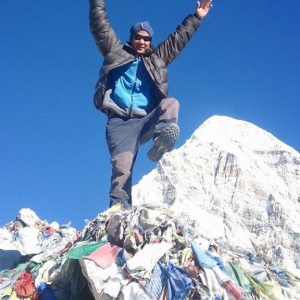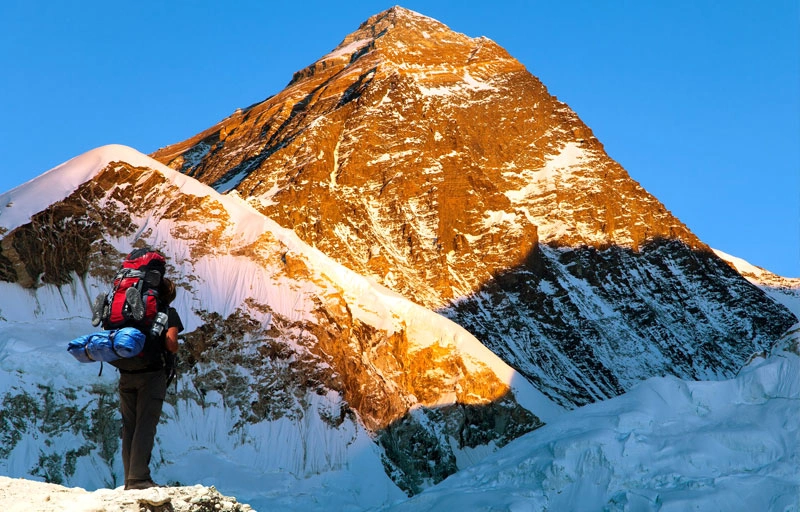Kala Patthar – The Best Viewpoint of Mount Everest
Table of Contents
Introduction
Everest Base Camp Trek is a legendary excursion that draws trekkers from all over the world. It presents breathtaking scenery, rich Sherpa culture, and an indelible experience along the Himalayas. The trail offers spectacular scenery and passes historic climbing landmarks.
Kala Patthar (5,545 meters) is the most popular viewpoint of the Everest region. It offers an opportunity of unrivaled view and the south face of Everest, its glaciers, and neighboring peaks. This is a peak that marks the best experience for trekkers in the Himalayas.
It is difficult, yet satisfying, to hike to Kala Patthar. The ascent provides spectacular sunrise and close-up landscapes of the high mountain Everest, with any adventurer who comes to this mountainous summit being caught up with breath-taking views of Everest in its thick alpine air.
Being a trekker, everyone envisions themselves standing on Kala Patthar to behold the magnificence of Everest. Reaching Kala Patthar feels like the ultimate reward of the trek. It is the most desired location of the Everest Base Camp trek, with its breathtaking panoramas that bring awe.
What is Kala Patthar?
Kala Patthar, derived from Nepali and Hindi, both meaning Black Rock, is so because of its dark rocky outcrop. The name reflects the rugged natural features because it is surrounded by the snow-covered Himalayan Mountains, and this can be seen as part of the uniqueness of the name.
Kala Patthar lies just above Gorak Shep, near Everest Base Camp. It is strategically positioned to provide trekkers with scenic views of the southern side of Everest and other significant mountains located in the Khumbu region, thus becoming a must-visit place.
The Kala Patthar has an elevation of 5,545 meters. The topography is rocky and steep, which requires a hard climb. Historically, Kala Patthar became popular with trekkers and photographers, but the first photos of Everest’s south face were taken from farther away (e.g., Pumori region).
Kala Patthar was a well-known perspective of photography on Everest because of its uninterrupted, close-up shots. Everest is a popular destination among both trekkers and professional photographers due to the spectacular and dramatic views of the mountain against the sky.
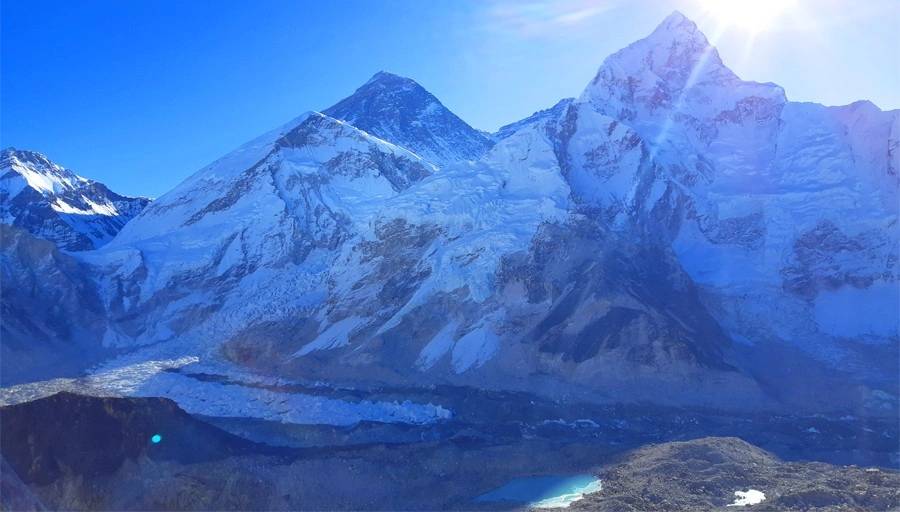
Why Kala Patthar Offers the Best View of Mount Everest
The only place where one can get a close-up view of the towering west and southwest face of Mount Everest is Kala Patthar. This is an uncommon perspective where the trekkers can view the sheer size and glory of the mountain without any visual obstructions or distractions.
The viewpoint provides a wide-angle view of Everest and other neighboring mountains such as Lhotse, Nuptse, Pumori, and Khumbutse. This panoramic view presents the great Himalayan range and enchants the mountaineers with several legendary mountains within one picture.
The sunset and sunrise at Kala Patthar are memorable. The yellow light, which covers Everest and the mountains around it, makes the scenery look like magic. These illumination effects bring out the outlines of the mountain and are awe-inspiring with ideal photo scenes.
Kala Patthar has a strong emotional and spiritual value to trekkers. The achievement of this opinion is an image of the conquest of physical difficulties and the achievement of a life dream. It is the peaceful environment that makes one reflect, feel grateful, and have a strong sense of connection with the Himalayas and the vastness of nature.
How to Reach Kala Patthar
Everest standard trekking trail starts at Lukla, then goes through Namche Bazaar, Tengboche, Dingboche and Lobuche, and finally Gorak Shep. The final settlement before the base of the Everest and the ascent of Kala Patthar is Gorak Shep.
The last climb between Gorak Shep and Kala Patthar normally consumes 1.5-2 hours. It is a rocky trail with steep switchbacks that end up scrambling with boulders to the summit with prayer flags, providing magnificent views.
The mountain offers physical difficulty in terms of steepness, roughness of the mountain, and high altitude. Kala Patthar is at an elevation of 5,545 meters, making its thin atmosphere capable of causing symptoms of altitude impact; therefore, good acclimatization, fitness, and judicious pacing towards the top are required.
Trekkers tend to walk to Kala Patthar in the morning or in the afternoon in order to experience sunrise or sunset. These times are the most optimal to observe the golden glow on the mountains of Everest to add to the incredible panoramic experience.
What to Expect on the Hike
Kala Patthar ascent has a steep, short climb on rocky and dusty trails. The trail also has switchbacks, scree slopes that need proper footing, especially during low light conditions, and thus proper equipment is of utmost importance as it keeps people safe.
The increase in altitude in this ascent is slow but steady, and the pressure of the thin air slows the speed. To overcome low-oxygen concentration and overcome the changes associated with altitude sickness, trekkers should move at a gradual pace, take rests, and hydrate themselves properly.
The weather of Kala Patthar is cold, dry, and heavy winds are seen even in trekking seasons. During early morning or late afternoon, it is necessary to use warm clothing layers and protect against wind chill to be comfortable.
A stunning view of Mount Everest in the full frame, when all the adversities are over. This emotional experience gives trekkers a strong attachment to the mountain that would make the challenging hiking experience incredibly fulfilling and memorable.
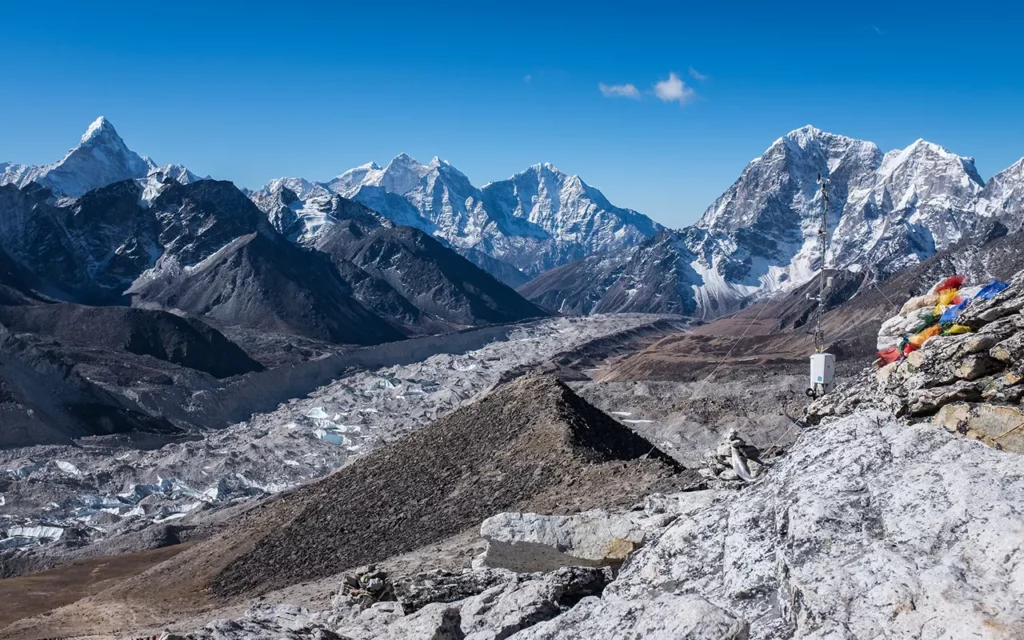
Sunrise vs. Sunset from Kala Patthar
The scene at sunrise in Kala Patthar is very magical, and the rays of the sun make the top of Everest golden. It is colder and needs a pre-dawn departure at about 3:30-4:00 AM (depending on seasons), but the crystal air and breathtaking alpenglow make it memorable to the trekkers.
Sunset is less crowded and has warmer colors that make it a pleasant experience. The diffused light creates surreal shadows in the Khumbu Glacier, which are ideal for photography.
With photography, a tripod should be used to achieve firm shots in low-light situations. Early in the morning, the Everest is golden and the climbers have their headlamps, and at night, the silhouettes are lit up against the sky of various colors. It is important to dress up and make preparations to change the light.
Acclimatization and Safety Tips
The height of Kala Patthar is 5,545 meters, which requires thorough acclimatization to avoid altitude sickness. Rest days will be spent in Namche and Dingboche, which enables your body to get used to high altitudes in a slow manner, minimizing the risk factors.
It is essential to be well hydrated, fed, and paced. Trekkers must practice the command of Climb high, sleep low which helps the acclimatization process to be safer and reduces the occurrence of the symptoms of Acute Mountain Sickness (AMS).
It is essential to notice the symptoms of AMS, such as headache, nausea, dizziness, and shortness of breath. As soon as the symptoms get worse, it is necessary to have an immediate descent, rest, hydration, and oxygen. Such precautions as sufficient acclimation can assist in making sure that survival and general security are guaranteed when undertaking high-altitude treks.
Slow, steady running, which keeps hydration levels high, and food rich in calories and easily digested are some of the factors that improve endurance. Trekkers ought to pay attention to their bodies, take many breaks, and should not hurry so that they may have a safe and pleasant experience on Kala Patthar.
Equipment and Gear Checklist
The cold climate in Kala Patthar requires a warm set of clothes. The down jacket, gloves, and beanie can be used to shield against the cold and strong wind, particularly in the early morning or late afternoon when a person hikes.
Trekking poles will support balance on rocky paths, whereas a good quality pair of footwear will support ankle and grip. One will need a good headlamp when dealing with low light. These are the essential equipment that improve safety and comfort on the way up.
A water bottle, snacks, and own medications prevent a drop in energy and hydration. Photographers are invited to come with a camera or a drone, so that they are able to take the amazing panoramic scenes without violating the local laws and nature.
Accommodation and Facilities
The final teahouse village prior to Kala Patthar is Gorak Shep, which has simple accommodation facilities. These include small lodges, guesthouses that have shared baths, limited heating, and simple beds. During the high seasons of trekking, the rooms are usually crowded.
Food is usually simple yet nutritious, such as dal bhat, noodles, as well as soups. The altitude and remote location make the level of comfort low. Extravagant facilities such as hot water and Wi-Fi are offered at an additional fee but might be restricted.
One should always have power banks, as electricity is solar-based and is limited. It is also significant to remain hydrated because the weather is dry and high altitude. The trekkers are advised to bring warm sleeping bags since they may need them during nighttime, as it is usually cold.
Scenic and Photographic Highlights
Kala Patthar provides the appropriate photographic vantage point for capturing Everest, Nuptse, and Ama Dablam from the best angles. Kala Patthar overlooks the three peaks to allow unhindered panoramic views that bring out the ridges and faces of all three iconic peaks in every light situation.
The morning and evening golden hours provide magical light that creates unique pictures. A wide-angle camera lens can capture the vastness and desolation of the entire mountain landscapes. Drone flights above Gorak Shep or Kala Patthar are restricted by the Sagarmatha National Park authority.
It is common to find clear skies over Kala Patthar during early mornings, with crisp, clear visibility of the surroundings. In the evenings, the dark surroundings combined with little light pollution allow for magnificent views of the Milky Way galaxy over Everest, a favorite spot for nature lovers and astrophotographers.
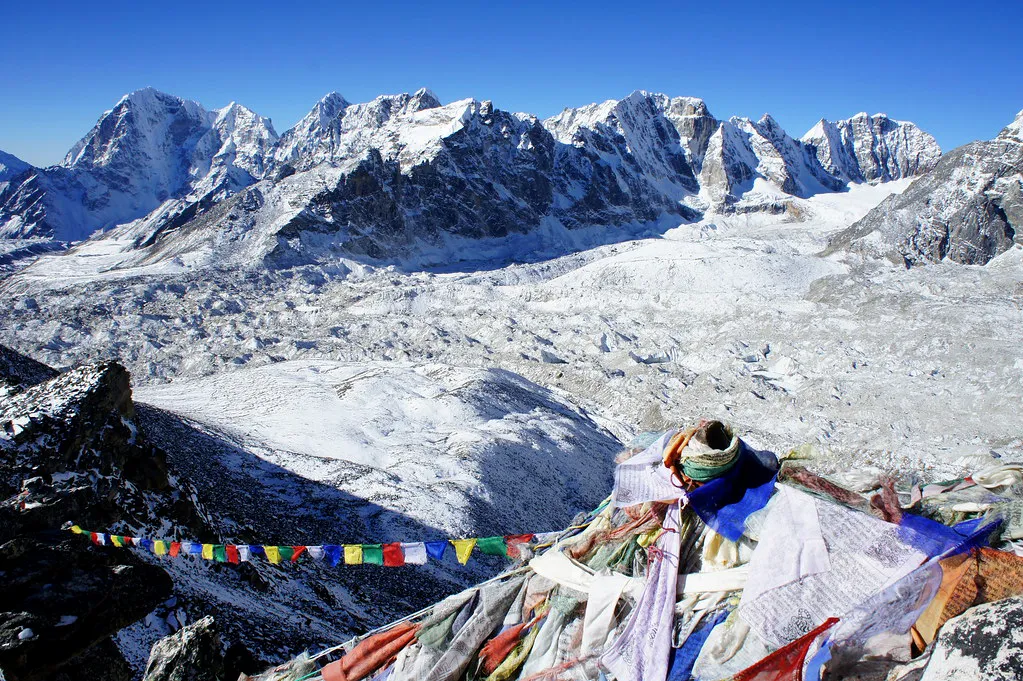
Best Time to Visit Kala Patthar
Ideally, spring (March to May) and fall (September to November) are the most favorable seasons to visit Kala Patthar when the weather is most predictable with clear skies and little rainfall, hence giving the best view and best trekking experience.
Spring is full of color trails, growing rhododendron, and nice weather to hike in. Autumn is also the perfect season to take pictures and attend outdoor events owing to its clear mornings, great sunshine, and magnificent mountainous landscapes.
It is highly recommended to avoid the winter months (December- February) when it is extremely cold and the trails may be snow-covered and icy. Similarly, during the monsoon season (June-August), it is very rainy, cloudy, and has low visibility, which is not good for trekking and taking photographs.
Kala Patthar vs. Everest Base Camp
The emotional values of Everest Base Camp include closeness to the atmosphere of high-altitude expeditions and acquaintance with climbers. Nevertheless, this point is still below a mountain of Everest, as it is covered by other mountains and icefalls.
Located at a greater altitude than Base Camp, Kala Patthar will offer a panoramic view of Everest and other nearby peaks such as Nuptse and Ama Dablam in the surrounding without any obstruction. This perspective brings to the fore all the splendor of the summit of Everest in a sharp, clear detail.
Combined, the two places complement the Everest experience: Base Camp will help immerse the trekker in the culture and logistics of the whole mountaineering experience, and Kala Patthar will provide an impressive and iconic view. The sightseeing of both enhances the enjoyment of the size of the mountain and the trekking success.
Conclusion
Kala Patthar is the highest accessible viewpoint on the standard EBC trek, offering a perfect panoramic view of the summit and the Himalayan giants that surround the summit. Its higher elevation shows the full glory of Everest, which cannot be found anywhere.
Kala Patthar climbing is a life-altering event in terms of accomplishment and unity with the natural environment. A hike to this legendary sight will give the explorers breathtaking scenery and a memorable experience with the highest mountain in the world.
“You may not stand on Everest, but from Kala Patthar, you truly see it.” This sums up the whole experience, a spectacular journey that ends at a spectacular view of the majestic Everest and the Himalayan marvels.


